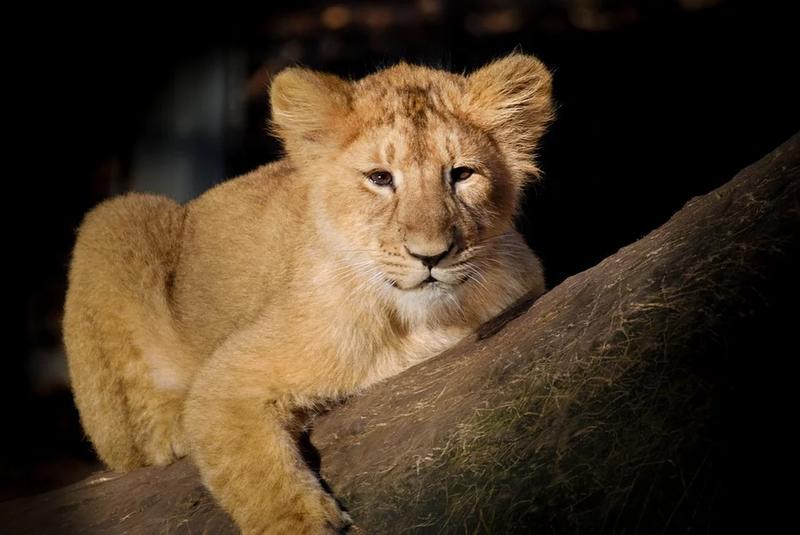What Is a Baby Lion Called?

Baby lions are called cubs until they reach maturity around three years old. Adult female lions are called lionesses, while male lions are simply lions. A group of lions is called a pride. The scientific name for the lion is Panthera leo. Because lions are at the top of the food chain wherever they live, they are often called the “kings of the jungle.”
Birth of a Lion Cub
When a female lion becomes pregnant, it takes about 110 days for her to give birth. She typically leaves the pride to have her cubs in a safe space where predators can’t get to her babies. Once she gives birth, she’ll have between one and six cubs, usually between two and four. The small family will stay away from the pride for about a month or two. During that time, the mother lioness only leaves her cubs to hunt for food, and if she perceives a threat, she’ll move the cubs to a safer location. Lion cubs are blind at birth and won’t open their eyes for the first week. They begin walking within a few days.
Size of a Lion Cub
At birth, a lion cub typically only weighs about two to four pounds, but adults can weigh up to 550 pounds. Adult lions are typically between nine and ten feet long. Asian lions are a little smaller as adults, reaching up to 418 pounds, and a length of about seven to nine feet.
Diet of a Lion Cub
During the first few weeks of life, lion cubs rely on their mother’s milk for nourishment. They’ll begin weaning around 10 weeks, but may nurse up to 10 to 12 months. Once the small family rejoins the pride, a lion cub will nurse from any female who produces milk, not just his or her own mother. Once they reach about 10 weeks, lion cubs begin eating solid food. After the adult members of a pride get what they want from each kill, the cubs snack on the scraps. Around one year of age, cubs begin learning how to hunt on their own, and by two years old, they can typically catch their own food, even though they stay with their mothers for another year or two.
Life of a Lion Cub
After a month or two alone, the mother lioness will return to the pride with her new cubs. Prides, which can have up to 40 other lions depending on how much food and water is in the area, are made up of mostly females and one to three males. The other adults in the pride may help raise the cubs, but they can also pose a threat, especially males. When a new male enters a pride, he may try to kill the cubs of other male lions so he can mate with their mother. While male lion cubs leave their mothers as they mature, females may stay together for life. Lions cubs are extremely playful for their first couple of years, and once they get to know their pride members, they may even try to play with the most dominant members. While a lion cub’s father doesn’t help raise it, he will protect his young if a predator comes after them.
Lion Cubs and Predators
A lion in the wild typically lives up to 10 years, though a lion in captivity can live as long as 25 years. However, the first hurdle is surviving the first year. Up to 80% of lion cubs don’t make it to see their first birthdays. The number one reason for this is the cub’s natural predators. Hyenas, eagles, wild dogs, jackals, snakes, leopards, and other large animals go after small cubs while their mothers are out hunting. Cubs who aren’t killed by predators may be killed by the new male lions in the pride, or they may become abandoned by their mothers who are killed by human hunters.





